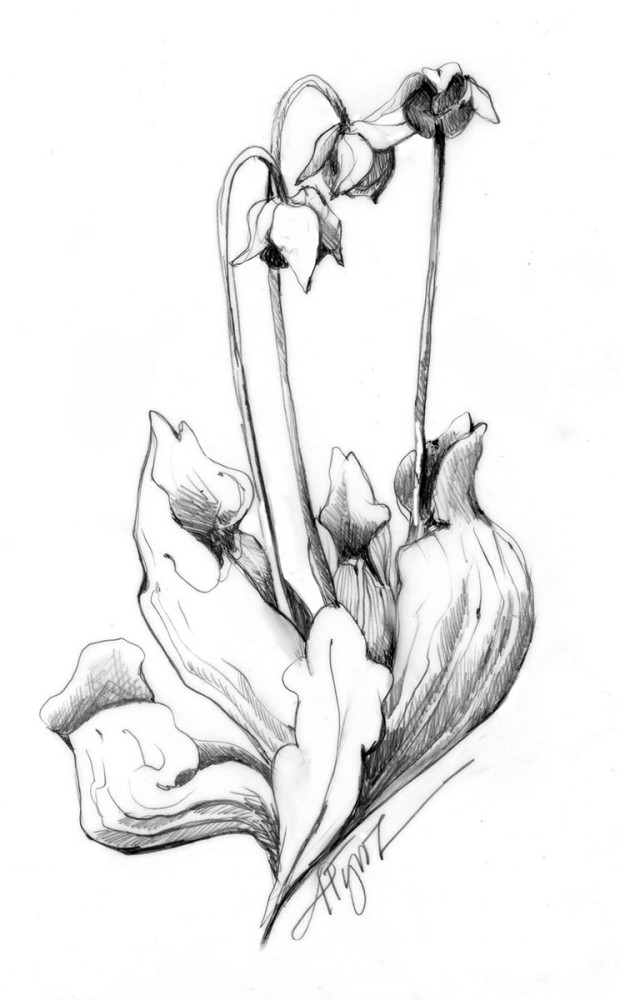
As a kid, I was fascinated and terrified by the idea of carnivorous plants. Growing up in suburban New Jersey, my only exposure to this particular subset of the plant kingdom was the ravenous, larger-than-life Venus fly trap in Little Shop of Horrors. If I stumbled upon a carnivorous plant in real life, I wondered, would it have teeth? If I ventured too close, would it grab on to my finger and never let go?
Imagine my disappointment when, years later, I found out that carnivorous plants only eat insects and small invertebrates. The first time I saw one of the non-theatrical variety – a roundleaf sundew glistening in a dune slack wetland on outer Cape Cod – I was struck by its small stature and delicate, jewel-like threads, such a far cry from the voracious, chomping tendrils I’d envisioned as a girl.
Since then, I’ve spent many afternoons exploring freshwater ponds by paddle, and discovered that if you work your canoe along the edge of a late-summer bog mat in New England, you’re likely to encounter three types of carnivorous plants: bladderworts, pitcher plants, and the aforementioned sundews. With its showy maroon blooms and red-veined, bell-shaped leaves, the Northern pitcher plant (Sarracenia purpurea) is the easiest to spot.
In a remarkable feat of evolution, the pitcher’s eponymous leaves function as vessels for the collection of rainwater in which insects die and decompose, yielding the nitrogen contained in their bodies to their botanical captors. Ants, beetles, spiders, and slugs dominate the pitcher plant’s diet, though one study found representatives of an astounding 115 insect families inside North Carolina pitchers.
Earlier this year, however, a study published in Ecology reported something straight out of my childhood imaginings: Northern pitcher plants also eat salamanders. In fact, nearly 20 percent of the pitcher plants surveyed by biologists in a fishless bog in Ontario’s Algonquin National Park contained recently metamorphosed spotted salamanders. On multiple occasions, more than one salamander was found within a single pitcher. In some instances, trapped salamanders went from alert and active to dead in as few as three days; others survived 19 days or more.
As with everything, timing appears to be key. Individual pitcher plants can live upwards of 50 years, producing 5 to 10 pitchers each year. New leaves begin growing in late spring, once the danger of frost has past. New spotted salamanders also begin growing in late spring: though timing varies by region, spotted salamander eggs typically hatch in May or June. The aquatic salamander larvae grow throughout June and July, and are usually ready for life on land by late summer – if they don’t first find their way into a pitcher plant’s gaping maw.
The Algonquin National Park surveys took place in August and September, just as the salamanders were metamorphosing. The researchers concluded that “salamanders may serve as an appreciable seasonal nutrient pulse for pitcher plants” and, further, that pitcher plants could be a “nontrivial source of mortality” for young salamanders.
The biologists theorized that salamanders might have been overlooked as pitcher plant prey simply because no one had been watching during the narrow window of time when young amphibians were finding their way into the pitchers, and because some of the soft-bodied salamanders decomposed in fewer than ten days after coming into contact with the enzymes and microorganisms (mites, rotifers, protozoa, bacteria) that aid the plant in digestion.
The Algonquin findings are supported by a similar study undertaken in Massachusetts, in which nearly 10 percent of the pitchers observed at Harvard Pond in August 2003 contained larval red-spotted newts in various stages of decomposition. The Harvard researchers calculated that a single larval newt contains 100 times more nitrogen than an ant, speculating that pitcher plants fortunate enough to acquire a newt’s-worth of nutrients in late summer might be more likely to flower the following spring than those dining on more diminutive prey.
Of course, both studies raise more questions than they answer. How and why do young salamanders find their way into the pitchers? How often do they escape? Do pitcher plants in amphibian-rich ecosystems fare better than their salamander-less compatriots? And how widespread is this phenomenon, exactly?
This August, inspired to find out whether our local pitchers were feasting on amphibians, and with visions of saving fresh-faced young salamanders from death by digestive enzyme, my husband and I took to several nearby bogs in search of pitcher plant prey. Inching our canoe close enough to peer down into the snug-mouthed leaves, we found moths and ants and slugs and, on more than one occasion, an unidentifiable slurry of decomposing goo – but no salamanders.
We’ll look again next year. Until then, we’re content to wonder at the fierceness of flesh-eating plants and all the mysteries they’ve yet to reveal.

